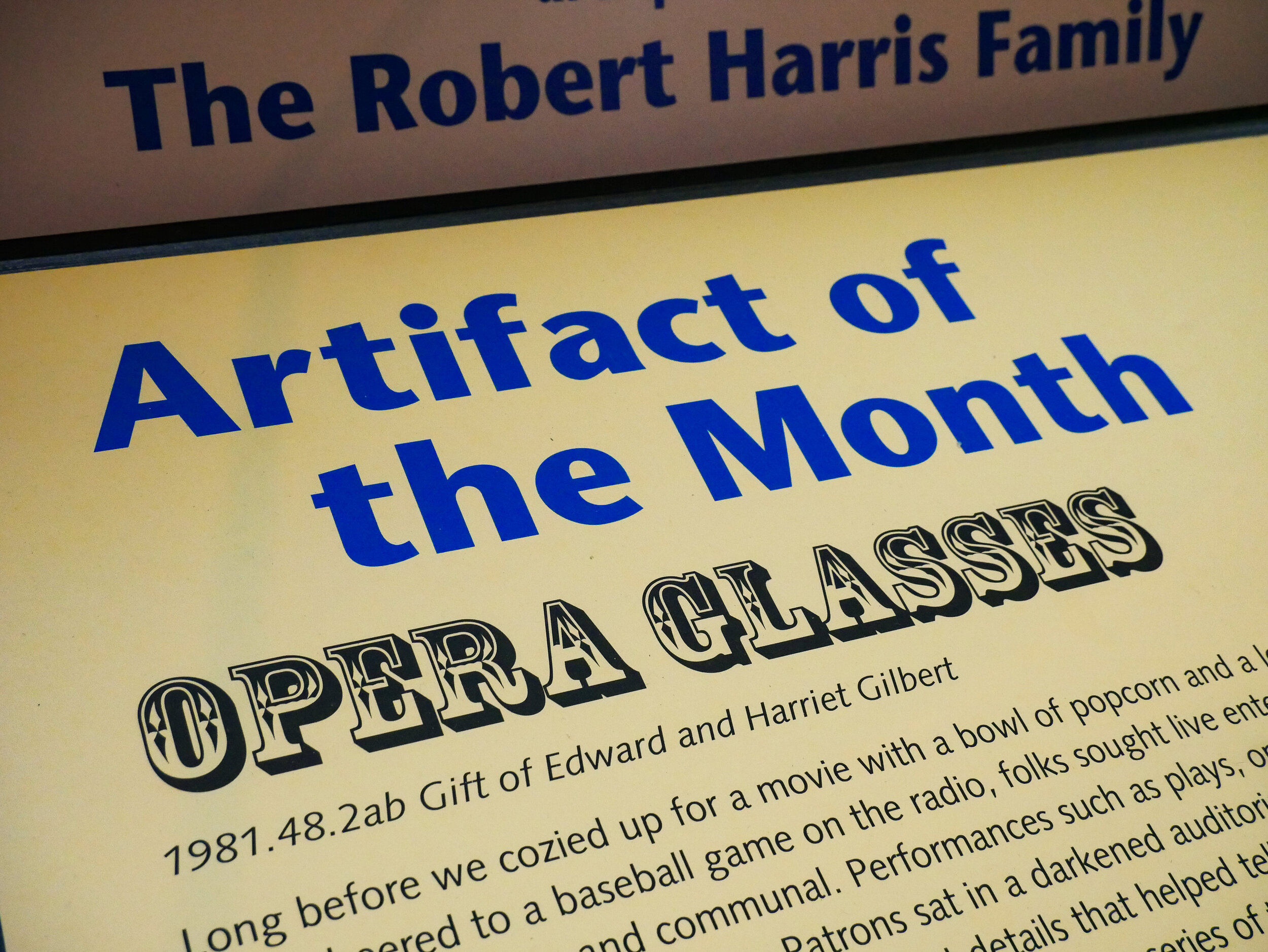Opera Glasses
1981.48.2AB Gift of Edward and Harriet Gilbert
Long before we cozied up for a movie with a bowl of popcorn and a loved one, shuffled through our iPod playlist, cheered to a baseball game on the radio, or sheltered-in-place, folks sought live entertainment in the company of friends and strangers. It was both intimate and communal. Performances such as plays, operas, ballets – even music, magic, and comedy – took place on a big, well-lit stage. Patrons sat in a darkened auditorium. Some were close enough to see the sweat of an actor’s brow, yet some sat too far to make out important details that helped tell the story. Sporting events like horse racing also presented a need to see the action from a distance. Luckily, a series of technological advances led to an elegant solution – opera glasses.




The first X3 binoculars were developed in 1608 by a Dutch optician with Galileo’s X30 telescope arriving a year later. There’s no evidence of “opera glasses” until 1730 in London advertisements and these were small telescopic “monoculars” or spyglasses. In 1823 the first binocular opera glasses appeared. They were simply two telescopes, each requiring independent focusing, affixed together with a bridge. Two years later in Paris, a center focus wheel was developed, allowing the focusing of both telescopes simultaneously. “LeMaire, Paris” printed on the objective lenses and a bee-shaped maker’s mark tell us our opera glasses were made by Jacques LeMaire, who began making opera glasses in 1847.
In an appeal to personal taste, opera glasses could be found bejeweled, enveloped in precious metals, or delicately and artfully painted. A beautiful design made this functional necessity a fashion accessory. For further personalization, engraved initials were common. Our example bears the engraving “H and E” and belonged to the donor’s parents Herb and Edith Ellsworth of Boise, Idaho. The Ellsworths purchased these opera glasses on their honeymoon to San Francisco in 1900.
To learn more about this artifact, visit the Artifact of the Month exhibit inside the Museum entrance at Turtle Bay Exploration Park. You can also click the link below for the Artifact of the Month webpage for more information on the exhibit and past blogs.
Cast your vote for the next Artifact of the Month below…








